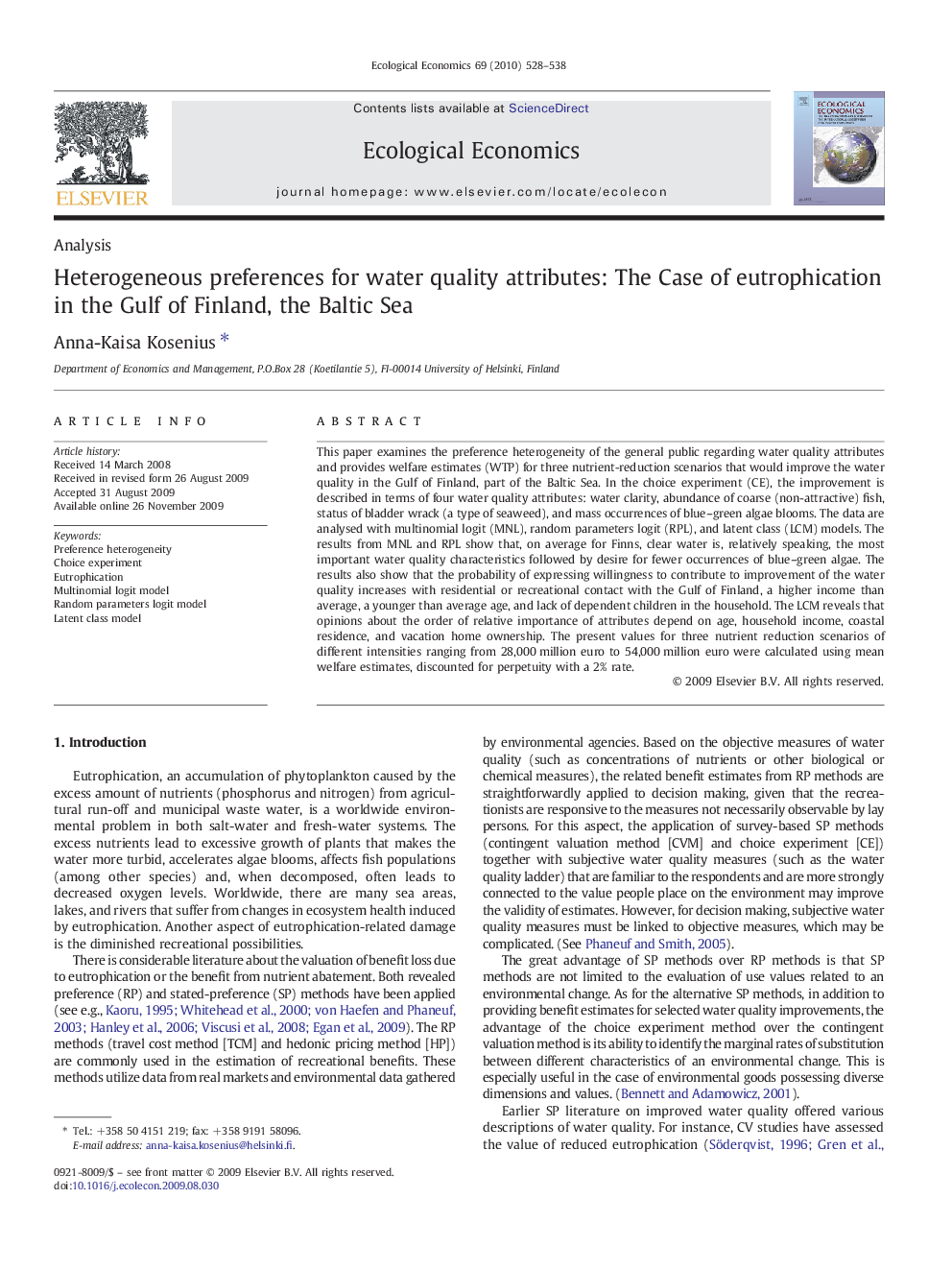| Article ID | Journal | Published Year | Pages | File Type |
|---|---|---|---|---|
| 5051121 | Ecological Economics | 2010 | 11 Pages |
Abstract
This paper examines the preference heterogeneity of the general public regarding water quality attributes and provides welfare estimates (WTP) for three nutrient-reduction scenarios that would improve the water quality in the Gulf of Finland, part of the Baltic Sea. In the choice experiment (CE), the improvement is described in terms of four water quality attributes: water clarity, abundance of coarse (non-attractive) fish, status of bladder wrack (a type of seaweed), and mass occurrences of blue-green algae blooms. The data are analysed with multinomial logit (MNL), random parameters logit (RPL), and latent class (LCM) models. The results from MNL and RPL show that, on average for Finns, clear water is, relatively speaking, the most important water quality characteristics followed by desire for fewer occurrences of blue-green algae. The results also show that the probability of expressing willingness to contribute to improvement of the water quality increases with residential or recreational contact with the Gulf of Finland, a higher income than average, a younger than average age, and lack of dependent children in the household. The LCM reveals that opinions about the order of relative importance of attributes depend on age, household income, coastal residence, and vacation home ownership. The present values for three nutrient reduction scenarios of different intensities ranging from 28,000Â million euro to 54,000Â million euro were calculated using mean welfare estimates, discounted for perpetuity with a 2% rate.
Keywords
Related Topics
Life Sciences
Agricultural and Biological Sciences
Ecology, Evolution, Behavior and Systematics
Authors
Anna-Kaisa Kosenius,
